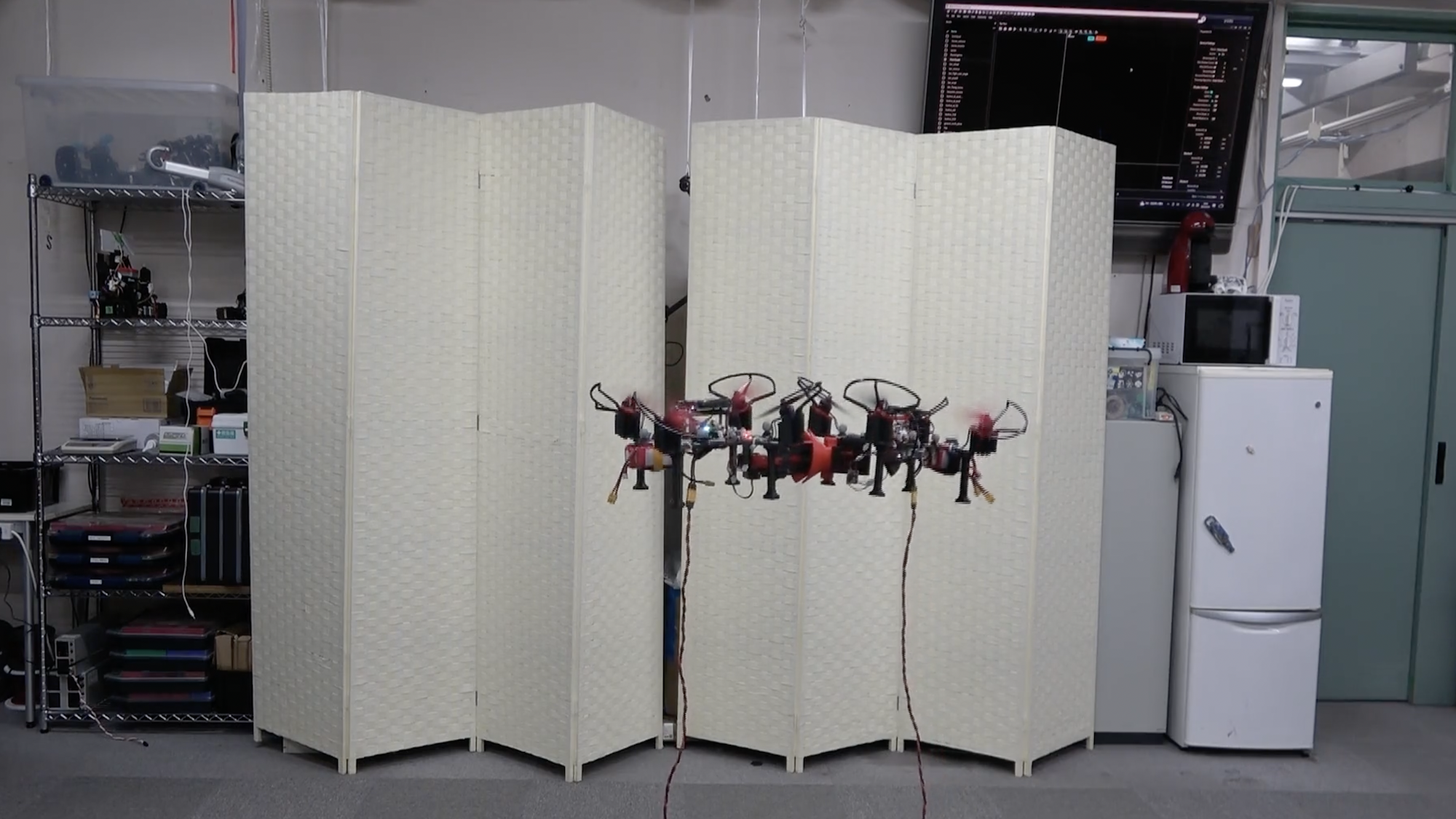

A drone’s size affects what it can—or can’t—do. If a drone is too small, it may be limited in the types of tasks it can complete, or the amount of heavy lifting it can do. But if a drone is too big, it may be difficult to get it up in the air or have it navigate around tricky structures, but it may make up for that in other ways
A solution that a group of engineers from the University of Tokyo came up with is to create a set of drone units that can assemble and disassemble in the air. That way, they can break up to fit into tight spaces, but can also combine to become stronger if needed.
Last month, the detailed design behind this type of system, called Tilted-Rotor-Equipped Aerial Robot With Autonomous In-Flight Assembly and Disassembly Ability (TRADY), was described in the journal Advanced Intelligent Systems.
The drones used in the demonstration look like normal quadcopters but with an extra component (a plug or jack). The drone with the plug and the drone with the jack are designed to lock into one another, like two pieces of a jigsaw puzzle.
[Related: To build a better crawly robot, add legs—lots of legs]
“The team developed a docking system for TRADY that takes its inspiration from the aerial refueling mechanism found in jet fighters in the form of a funnel-shaped unit on one side of the mechanism means any errors lining up the two units are compensated for,” according to Advanced Science News. To stabilize the units once they intertwine, “the team also developed a unique coupling system in the form of magnets that can be switched on and off.”

Although in their test runs, they only used two units, the authors wrote in the paper that this methodology “can be easily applied to more units by installing both the plug type and the jack type of docking mechanisms in a single unit.”
To control these drones, the researchers developed two systems: a distributed control system for operating each unit independently that can be switched to a unified control system. An onboard PC conveys the position of each drone to allow them to angle themselves appropriate for coming together and apart.
Other than testing the smoothness of the assembly and disassembly process, the team put these units to work by giving them tasks to do, such as inserting a peg into a pipe, and opening a valve. The TRADY units were able to complete both challenges.
“As a future prospect, we intend to design a new docking mechanism equipped with joints that will enable the robot to alter rotor directions after assembly. This will expand the robot’s controllability in a more significant manner,” the researchers wrote. “Furthermore, expanding the system by utilizing three or more units remains a future challenge.”

